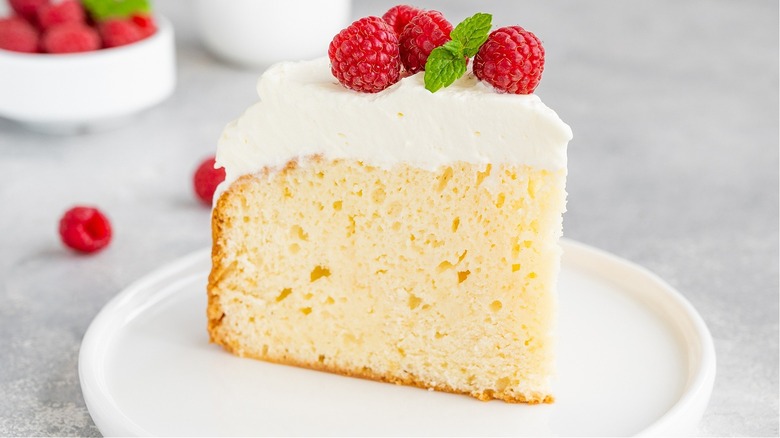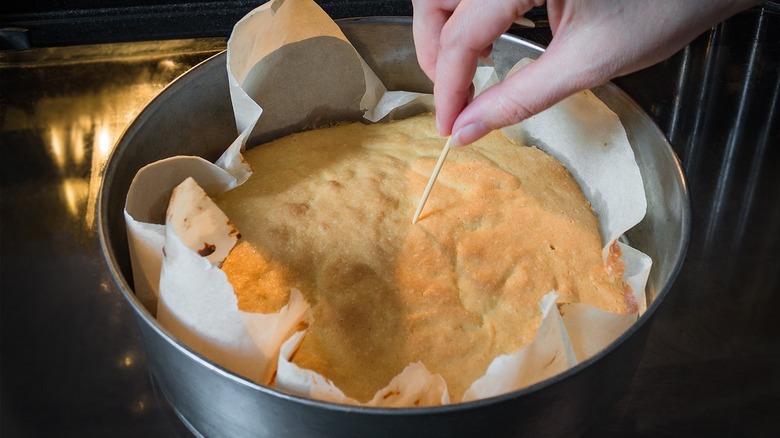The Strange Reason Cake Testers Aren't Actually Helpful To Use On Cake
After the difficult few years we've all endured, we should find more reasons to celebrate life. Birthdays beyond ones ending in zero, a successful day at work or school, and sticking to your New Year's resolutions are cause for celebration. While party hats don't look great on everyone and noisemakers are never a good idea, baking a cake is a surefire way to mark the occasion as celebratory- "Let them eat cake."
Although the adage "piece of cake" is synonymous with something being easily accomplished, there are many ways to ruin a cake. According to Allrecipes, home cooks frequently make the same mistakes when baking resulting in dry or overly dense cakes. Some common mistakes are made before the cake goes into the oven, like overmixing the batter, improperly measuring the ingredients, not greasing the cake pan enough, or using ingredients at the wrong temperature. Other issues arise during baking, like not preheating the oven, the wrong oven temperature, cake doming, or overbaking.
Since baking is as much a science as it is an art, understanding why this happened is essential to correct the mistake next time. While some kitchen tools are necessary, like using a kitchen scale to measure dry ingredients, some are just taking up space and are part of the problem. Cake testers, the long metal probes used to test the doneness of a cake, could be part of the problem resulting in dry, overbaked cakes, and here's why.
The toothpick test
While our senses are helpful when cooking, relying solely on how a cake looks in the oven can be deceiving. Improper baking temperatures can lead to cake tops prematurely browning and crusty sides. These misleading clues can result from your oven being too hot, leaving the center of the cake raw. According to Food52, baking the perfect cake is a nuanced art. Baking brownies and some cakes require moister results than others. Cake testers, ranging between five to eight inches long, allow bakers to see what's happening beyond the surface of the cake. While the stainless steel tool is durable and reusable, the smooth surface of the pick doesn't tell the whole story.
Unlike a wooden toothpick or skewer, a stainless steel cake tester has a slick surface that prevents crumbs from clinging to its surface. However, the porous and uneven surface of wood allows the crumb to stick and changes color when the batter is too wet, another indicator that the cake may not be done. When a cake is done, a toothpick inserted into the center of the cake, without touching the bottom of the pan, should come out clean, or just a few crumbs clinging to it.
If you're wondering what to do with your cake tester, Serious Eats recommends using it when cooking vegetables and meat instead. The metal probe can indicate if vegetables are tender enough or if meat is fork-tender without leaving much of a mark on the food.

